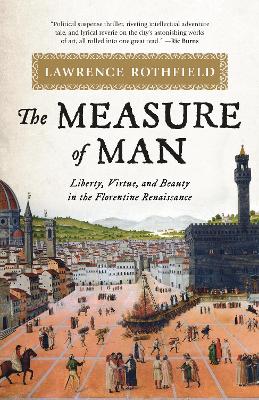Michelangelo, Machiavelli, the Medicis. Explore the Florentine Renaissance, one of the most concentrated surges of creativity in the history of civilization in this enthralling book that brings the city to glorious life. A highly readable introduction to the Florentine Renaissance, blending the republic's political and economic tensions with tales of artistic creativity and innovation. Packed with fascinating color and detail, it's perfect for students and travelers to Florence who want to hit the ground running as well as for anyone interested in better understanding how the outsized impact of this remarkable city grew and ultimately faded, and why its power dimmed but its splendor endures. -organized as a unified, unfolding drama -presents Florence's history as a tragic struggle of republican liberty against tyranny -shows how the Renaissance city's art, architecture, and literature participate in that struggle -brings to life a panoply of vibrant individuals, both legendary and obscure -short enough, and gripping enough, to be read cover to cover during the time it takes to fly to Florence It was one of the most concentrated surges of creativity in the history of civilization. Between 1390 and 1537, Florence poured out an astonishing stream of magnificent works by artists, sculptors, and architects. But Florentines did more during this brief period than create masterpieces. As citizens of a fractious republic threatened from below, without, and within, they also were driven to reimagine the political and ethical basis of their world, exploring the meaning and possibilities of liberty, virtue, and beauty. This vibrant era and its legendary artistic and political figures are brought to life in rich detail by noted historian Lawrence Rothfield. He traces the concern for liberty and virtue that first arose in the medieval commune, shaped by the fierce competition and explosive class conflicts of a precocious capitalist society. But it took a dramatic threat to the republic from an expansionist tyrant to spark the Renaissance by forcing the humanist intellectuals advising Florence's merchant governing elite to turn to the ancient Roman Republic for models of anti-tyrannical virtue and ideas of liberty. The ensuing rage for things classical was understood by the Florentines as a rebirth of Roman ways, not a liberation from the past. Indeed, as an ideology it aimed at suppressing dissent beneath a veneer of consensus, civic self-sacrifice, and respect for parents. Yet under its guise Florentines would begin to pose new questions, envision new ideals, and set new tasks for themselves, spawning a vibrant cultural and political life filled with memorable individuals and unique opportunities for audacious risk-taking, teetering between serene beauty and shocking violence. Ultimately, this dynamic would end with the republic destroyed by the forces it had unleashed. The Measure of Man tells the story of Florence's rise and fall, tracing the tragic arc running from the cultural heights of republican idealism in the early fifteenth century, through the aesthetic flowerings and civic vicissitudes of the age of the Medici and Savonarola, to the brooding meditations of Machiavelli and Michelangelo over the fate of the dying republic.
- ISBN10 1538143364
- ISBN13 9781538143360
- Publish Date 17 May 2021 (first published 1 March 2021)
- Publish Status Active
- Publish Country US
- Imprint Rowman & Littlefield
- Format Hardcover
- Pages 216
- Language English
